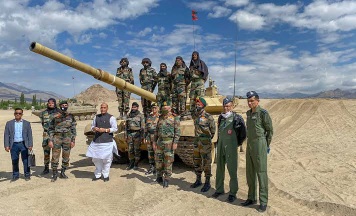According to the 2025 annual report by the Stockholm International Peace Research Institute (SIPRI), India has gained significant lead over Pakistan in nuclear weapons and missile technology. This disclosure has come at a time when the recent tension between India and Pakistan, especially after the Pahalgam terror attack of April 2025, has become a cause of global concern.
According to Sipri’s estimate, India has 180 nuclear weapons, while Pakistan has 170. This is the first time India has left behind Pakistan in number of nuclear weapons in 15-20 years. India’s Agni-5 missile, which is a 5,000 km range and is likely to be equipped with multiple independent targetable retirement vehicle (MIRV), strengthening it strategically. This technique provides the ability to penetrate several goals from a missile.
On the other hand, Pakistan is dependent on Shaheen-III (2,750 km range) and Babur Cruise Missile with 170 nuclear weapons. Sipri noted that Pakistan’s low-range Tactical is focusing on nuclear weapons, designed for use in the battlefield. His vague nuclear policy is contrary to India’s “No First Use” (NFU) policy, which only talks about a counter -attack.
Recent tension, in which India attacked terrorist bases in Pakistan and POK on 7 May 2025 under “Operation Sindoor”, raised the possibility of nuclear war. Pakistan fired the Fatah-II missile (400 km range), which India stopped in Sirsa, Haryana. India retaliated with BrahMos, Scalp, and Hammer missiles, causing heavy losses to Pakistan.
Sipri warned that the nuclear arsenal and regional instability of the two countries were threatened by global security. India’s technological progress and strategic policy strengthens it as a regional power, while Pakistan’s nuclear threats reflect its traditional military weaknesses.
